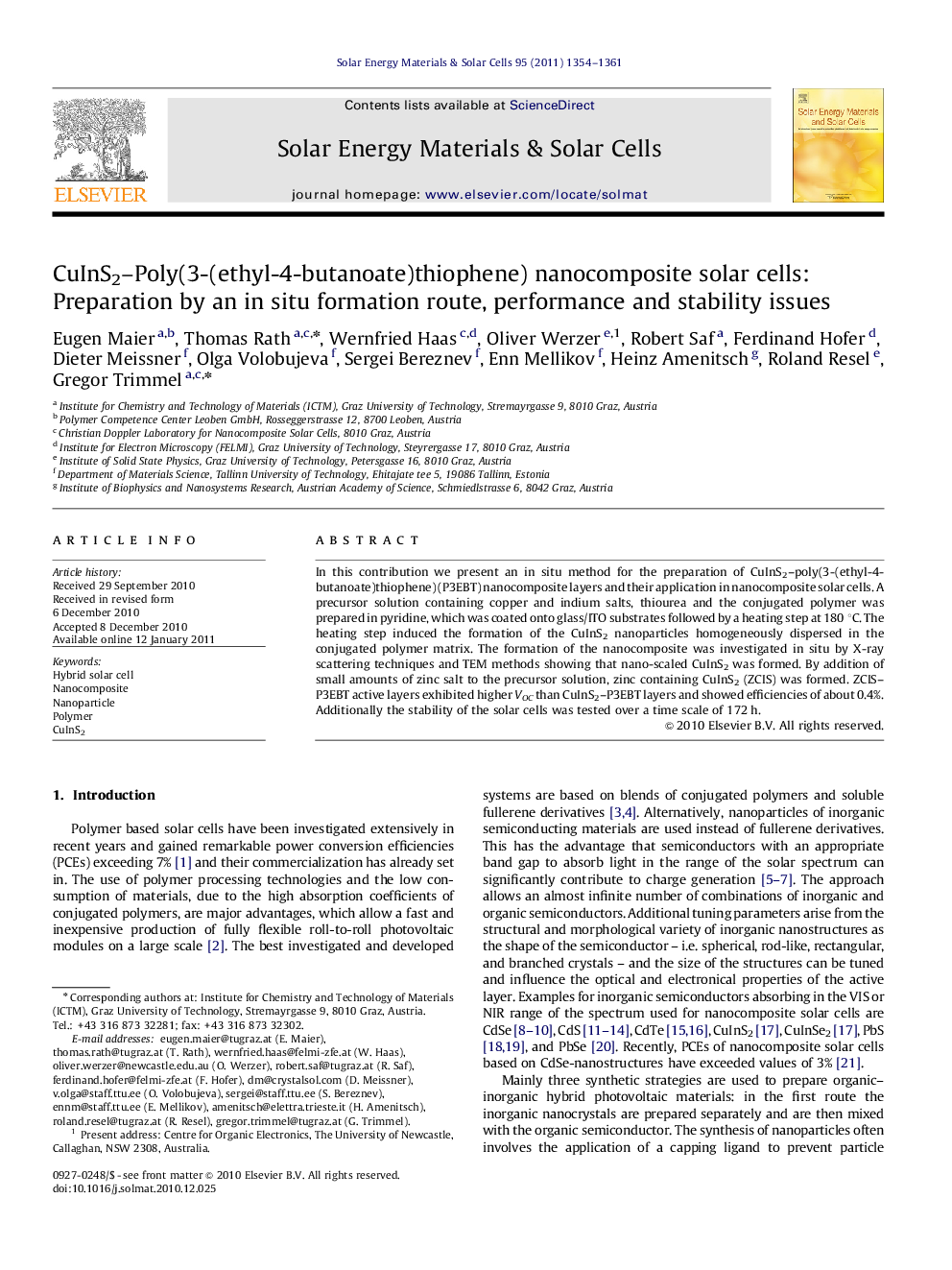| Article ID | Journal | Published Year | Pages | File Type |
|---|---|---|---|---|
| 79060 | Solar Energy Materials and Solar Cells | 2011 | 8 Pages |
In this contribution we present an in situ method for the preparation of CuInS2–poly(3-(ethyl-4-butanoate)thiophene) (P3EBT) nanocomposite layers and their application in nanocomposite solar cells. A precursor solution containing copper and indium salts, thiourea and the conjugated polymer was prepared in pyridine, which was coated onto glass/ITO substrates followed by a heating step at 180 °C. The heating step induced the formation of the CuInS2 nanoparticles homogeneously dispersed in the conjugated polymer matrix. The formation of the nanocomposite was investigated in situ by X-ray scattering techniques and TEM methods showing that nano-scaled CuInS2 was formed. By addition of small amounts of zinc salt to the precursor solution, zinc containing CuInS2 (ZCIS) was formed. ZCIS–P3EBT active layers exhibited higher VOC than CuInS2–P3EBT layers and showed efficiencies of about 0.4%. Additionally the stability of the solar cells was tested over a time scale of 172 h.
graphical abstractIn situ preparation of polythiophene–CuInS2 nanocomposite layers for application in hybrid solar cells.Figure optionsDownload full-size imageDownload as PowerPoint slideResearch highlights► Nanocomposite solar cells with a polythiophene donor and a CuInS2 based acceptor. ► Nanoscaled acceptor is formed within the polythiophene leading to a BHJ structure. ► XRD and GISAXS experiments indicate CuInS2 phase formation starting at 120 °C. ► Solar cells show PCEs of 0.4% with a major contribution of CuInS2 to photocurrent.
